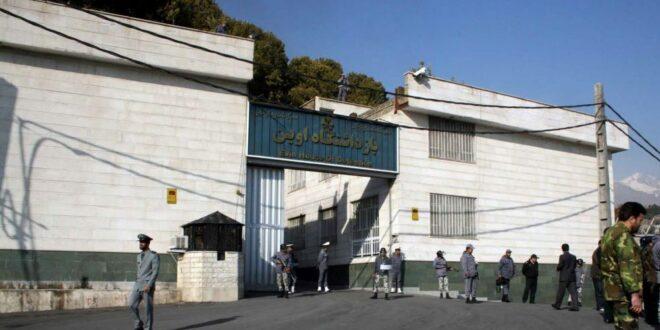Pete Haug
Source: spokanefavs.com

I first learned of it last week, right here on FāVS News. Cassy Benefield wrote, “Religious Persecution Explained in New Report about Countries with Worst Religious Freedoms.” That report was published May 1 by the U.S. Commission on International Religious Freedom (USCIRF). It defines religious freedom clearly: “Freedom of religion or belief ensures individual autonomy to have, change, reject, interpret, and manifest religion or belief according to one’s own conscience, which is at the core of other interconnected human rights.”
It explains that states targeting people on the basis of religion or belief “seek to deny this autonomy by deliberately weaponizing religion or belief as a tool of shame and silencing.” Iran is one of 28 “countries of particular concern.”
In April, USCIRF released a factsheet documenting “Sexual and gender-based violence (SGBV) against religious freedom protesters in Iran.” It notes, “the government of Iran is using [SGBV] with unique intentions and effects against those protesting gender-based restrictions … The Iranian state’s use of SGBV is not new, nor is it uniquely used against those seeking greater religious freedom.” Verifiable documentation supports these allegations.
Recognizing that religious persecution can hit close to home, Benefield featured an interview with a local doctor, originally from Iran. Dr. Fereshteh Momeni has been practicing at Eastern State Hospital-Medical Lake for more than 20 years. She shared with Benefield some of her personal experiences growing up as a Bahá’í in Iran.
A Long History of Persecution
Much of the recent persecution in Iran is against Bahá’ís, who have suffered persecution there since the mid-19th century. Early believers were often tortured to death. Contemporaneous media accounts recorded eye-witness descriptions. Members of the diplomatic corps from Western nations reported, to their home nations, what they had personally observed. The record is clear.
Sadly, it’s somewhat reminiscent of “Foxe’s Book of Martyrs,” a 1563 account of “sufferings of Protestants under the Catholic Church,” particularly in England and Scotland. Modern accounts from the 19th and 20th centuries similarly document Bahá’ís suffering martyrdom at the hands of Islamic clergy and Iranian government officials during the beginnings of the Bahá’í Faith in the 19th and early 20th centuries.
As described in the 2023 USCIRF report, Iran continues these persecutions today. Although not limited to Bahá’ís at this time, Bahá’í s often seem to be singled out, bearing the brunt of such persecution. A search in the online Baha’i Reference Library yields more than 200 examples of how the Bahá’í faith has, for nearly two centuries, been impacted. The following lament was written in 1955 by the Guardian of the Baha’i Faith:
“A crisis in the fortunes of the Faith of Bahá’u’lláh, of exceptional severity, extensive in its ramifications, unpredictable in its immediate consequences, directly involving the overwhelming majority of His followers in the land of His birth [Iran], and confronting with a major challenge Bahá’í communities in both hemispheres, has plunged the Bahá’í world…into intense sorrow and profound anxiety.”
A Website Documenting Bahá’í Persecutions
Nearly seven decades after that was written, persecutions continue. But now that track record is available for all to see. Last week, Bahá’ís of the world were informed that a website, “Archive of Bahá’í Persecution in Iran,” is now available. It provides “a resource of unparalleled significance” for anyone seeking irrefutable evidence of Baha’i persecutions.
The announcement from the Bahá’í World Center explains, “Since the earliest days of the new Revelation, believers in the Cradle of the Faith [Iran] have been the target of relentless persecution,” as documented by “earliest records of the sustained and brutal attacks on the friends of God.”
Available in both English and Persian, this website “sheds light on the decades-long systematic persecution of the Baha’is in Iran.” Covering a wide range of incidents, it includes “systematic discrimination, arrests and imprisonments, physical violence and executions, economic oppression and deprivation, exclusion from education, acts of property destruction and cemetery desecration, and propaganda and incitement to hatred.”
This collection contains more than 10,000 documents, images, and audio and video records of instances of persecution in Iran, dating back as far as 1848. The bulk of the archive is from the most recent wave of persecutions that began in 1979. Records “have been transcribed and made available in text format in Persian and with English translations.”
The site provides “a resource of unparalleled significance, not only for historians, researchers, film-makers, journalists, and human rights advocates,” according to the announcement. It’s also for individuals “who may wish to learn about and remember the sacrifices made by their own friends and family members.”
The Universal House of Justice authorized publicizing this website “to assist the worldwide Bahá’í community in defending the rights of the Bahá’ís in Iran” and to create a deeper awareness of the scope and severity of Bahá’í persecutions.
Leave a Reply